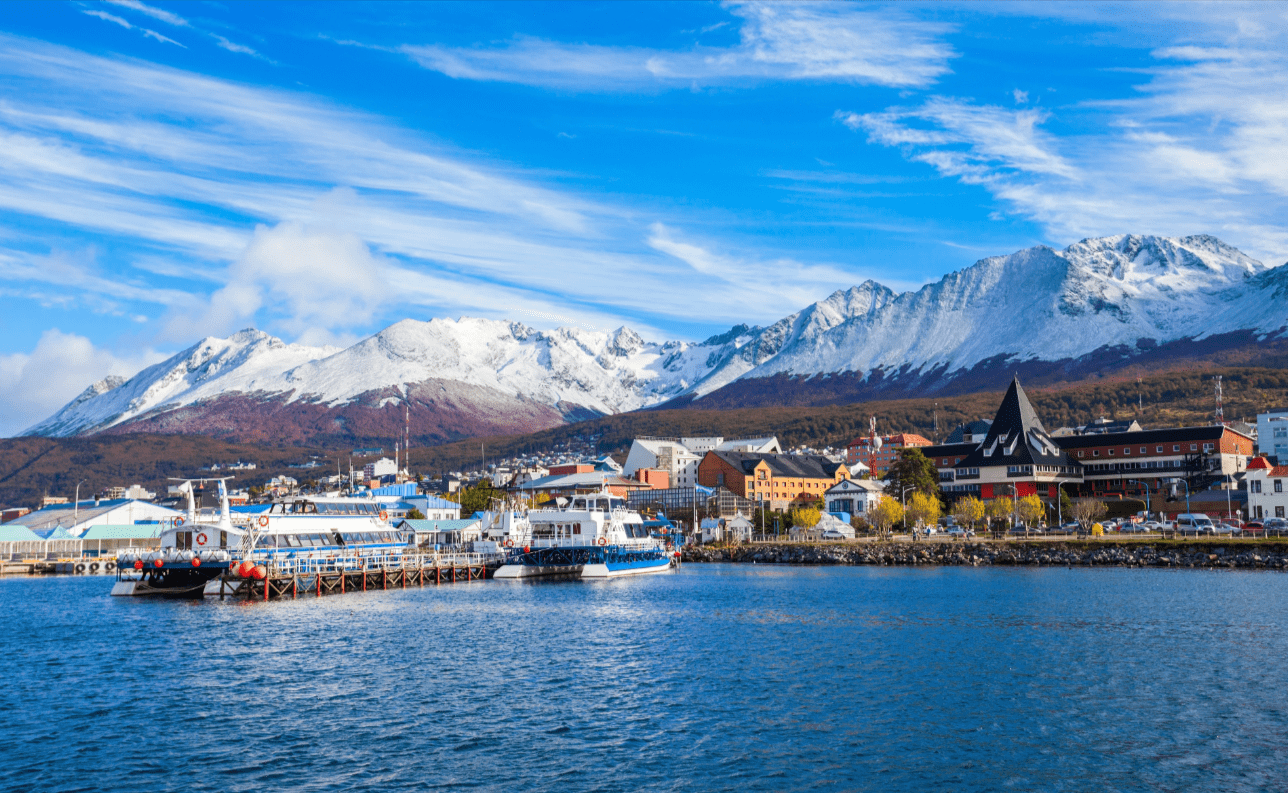The Best Countries with Long-Term Digital Nomad Visas

Digital nomad living seems to be all over the place nowadays, allowing location-independent workers to travel from country to country and continue supporting themselves in the process. A viable long-stay visa for digital nomads is one of the biggest barriers, though. Countries have quickly jumped into the digital nomad trend by creating long-term digital nomad visas to welcome this type of traveller.
This article will tell you everything you need to know about the best long-term digital nomad visas, their advantages and disadvantages and how to get one. With an excellent combination of affordability, safety, high-speed internet and large nomadic communities, these countries are some of the best options for digital nomads who want to base themselves in one place for an extended time.
What is a Digital Nomad Visa?
A digital nomad visa allows remote workers to legally and often long-term reside and work in another nation. Compared to traditional tourist visas, a digital nomad visa usually allows you to remain in a country longer–from six months to two years or more–while employed by a foreign-based company or your own online business.
These are the sort of visas for employees who want to live abroad for an extended period of time while keeping the job or freelancer job. Digital nomad visa are a legal framework that allows nomads to live comfortably and legally while enjoying the benefits that come along with living in a new culture.
1. Estonia
Overview:
As one of the first countries to offer a digital nomad visa, Estonia is considered one of the most exciting countries in the world for remote workers. Estonia is famous for its strong digital infrastructure, e-residency and startup-friendly environment. Estonia is another great option for long-term digital nomad visas due to its stunning landscapes, diverse history, and expanding tech community.
Benefits:
- Length of Stay: You can live in Estonia for up to one year on a digital nomad visa.
- Apply: The visa should be applied through online or at Estonian embassy. It's a pretty straightforward process, and the applicant must show that he has a steady remote income.
- Eligibility: you need to show that you are employed remotely by a company based outside of Estonia, or have your own online business or are providing some services online over a website.
- COST OF LIVING: A COST-EFFECTIVE PLACE TO LIVE IN ESTONIA: Low Cost of Living – Estonia enjoys a low cost of living when compared to most of Western European countries. An apartment in Tallinn would range from $500-$800 to rent.
Things to Do in Estonia:
- Discover the medieval Old Town in Tallinn.
- Spend time in national parks (Lahemaa, Soomaa)
- Embrace the popular café culture and startup scene of Talllinn.
2. Portugal
Overview:
Portugal is another digital nomad wonderland. Portugal is also a popular choice for remote workers, thanks to the warm weather, beautiful beaches, affordable cost of living and quick travel to the rest of Europe. Portugal — Digital Nomad Visa (D7 Visa) In 2022, Portugal created their D7 Visa for remote workers which has been used as a longer-term digital nomad visa.
Benefits:
- Length of Stay: The D7 visa grants you one year of residency, and can be extended after five years.
- D7 visa application process: For a D7 visa application, you will need to prove that you have enough means to live in Portugal without the need for work. It is possible to apply at a Portuguese consulate in your country.
- Qualifications: Must show permanent remote work or permanent income from investments. It is also offered for passive income earners and retirees.
- Cost of Living: Lisbon and Porto are the most popular cities for digital nomads in Portugal, with affordable housing options available, starting at approximately $600 a month.
Things to Do in Portugal:
- Explore the historic districts of Lisbon.
- Explore the pristeen coastline of the Algarve.
- Visit the wine cellars and riverside of Porto.
3. Barbados
Overview:
Something like:Here is where you have to go if you want to enter as a digital nomad on special visa called the "12-Month Barbados Welcome Stamp." The program was launched to bring remote workers to the island for up to a year to live— and work— in their tropical paradise.
Benefits:
- Length of Visa: The Barbados Welcome Stamp is valid for 12 months and can be renewed
- How to Apply: The application process is simple and requires proof of the necessary means to live in Barbados without the need to work.
- Eligible: Have employment as a remote worker for an enterprise outside Barbados or be a remote business owner
- The Cost of Living: While Barbados costs more than some other digital nomad destinations, you get quality services and infrastructure. Rental cost will range typically around $800–$1,200 U.S. dollar every month.
Things to Do in Barbados:
- Lounge on the white sand beaches and clear blue waters.
- Visit the historic places such as Bridgetown and the Garrison.
- Discover the unique island culture and experience local festivals.
4. Croatia
Overview:
With its beautiful Adriatic coastline, pleasant weather and low-cost living, Croatia is fast becoming one of the hottest digital nomad destinations. Croatia launched a long-term visa for digital nomads in 2021, enabling remote workers to live in Croatia more easily.
Benefits:
- Length of Visa: Up to a year for a Croatian digital nomad visa.
- Mode of Application: Proof of income from remote work or freelancing work (health insurance details and alternative place of stay).
- Who qualifies: The visa is open to those who have a remote job with a minimum monthly salary of $2,500. This means digital nomads can afford a comfortable way of life whilst they are there.
- Cost of Living: One of the biggest perks to living in Croatia is affordable living, particularly if you're out of the big cities like Dubrovnik (i.e., rents can be found around $500 per month in cities like Split and Zadar).
Things to Do in Croatia:
- Travel to the old town of Dubrovnik.
- Discover the stunning islands and beaches on the Adriatic coast.
- Explore Split and the UNESCO-listed Diocletian’s Palace
5. Georgia
Overview:
Georgia, situated on the boundary between Europe and Asia, has its own special offer for digital nomads — a "Remotely from Georgia" visa program, which allows remote workers to live and work in the country. The new scheme enables remote workers to leave for up to 1 year, with a chance to extend the stay in Georgia.
Benefits:
- How long can you stay: One Year from the "Remotely from Georgia" visa
- Ease of Application: Application process Time None as the process is online and completed in lesser time. Evidence of income must come from remote jobs or freelance work for applicants.
- Digital nomads are required to show that their employers are foreigners, or that they work independently for foreign clients.
- Cost of Living: Another reason why Georgia is one of the cheapest, if not the cheapest, digital nomad destinations available is the incredibly low cost of living, including monthly rents starting from just $300–$400.
Things to Do in Georgia:
- Tbilisi Although it is not the capital of Georgia, the charming capital city of Tbilisi
- Explore beautiful Caucasus Mountains and ski resorts.
- Explore History and Wine Culture of Georgia.
6. Dubai, United Arab Emirates
Overview:
Dubai, one of the most modern and luxurious cities in the world, is also launching a new program to attract digital nomads called the "Virtual Working Program." The program enables remote workers to live and work in Dubai for up to one year and enjoy its world-class infrastructure and tax-free income perks.
Benefits:
- You can stay for 1 year under the Virtual Working Program, and it is extendable.
- Process of Application: The application process is simple as you need to submit proof of self-employment or remote work, proof of health insurance, and a document with a police record of no recent crime.
- Eligibility — Applicants must demonstrate a minimum income of $5,000/month or an investment fund.
- Dubai is known to be an expensive city and realistically, Dubai is pricey for a good reason — the infrastructure is top-notch and so is the amenities. The rental price is different from location to location, starting from $1,000 to $3,000 a month
Things to Do in Dubai:
- Visit the largest malls across the globe and top class luxury stores.
- Take a trip to the Burj Khalifa for panoramic views of the city.
- Uncover this desert with a speedy safari.
7. Mexico
Overview:
Mexico is constantly one of the best international locations for digital nomads, recognized for its nearness to the United States, lively culture, and low fee of living. Mexico has launched a temporary resident visa, ideal for those who wish to stay for up to 4 years, the best long-term digital nomad visa option out there!
Benefits:
- Visa Type: Temporary resident visa with an initial lease of one year that can be renewed for a total of up to four years.
- APPLYING: Proof of enough income or savings — approximately $1,600 monthly — is needed from applicants.
- One has to be a remote worker for an overseas company or an overseas freelance worker.
- Cost of Living: Mexico is very cheap; many cities have rents under $300–$500 per month.
Things to Do in Mexico:
- Tour the ruins such as Chichen Itza and Teotihuacan
- Experience the arts and culture of Mexico City.
- To have the amazing beach days in Playa del Carmen and Puerto Vallarta.
Conclusion
With much-beloved digital nomad lifestyle conquering the world, there are more and more countries that offer long-term digital nomad visas to facilitate remote workers. These countries have some of the best long stay opportunities if you’re in the market for a cheap place to live, beautiful scenery, or a city vibe!
There are many places you can legally live and work, enjoying the whole remote work lifestyle, from the tech-friendly environment of Estonia to the sunny beaches of Barbados. Choose the correct digital nomad visa, and you can be free to work from any corner of the world.
